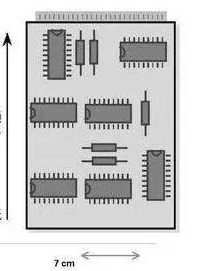What is the difference between analog and digital circuits in PCB design?
In each PCB design, the noise part and the "quiet" part (non-noise part) of the circuit should be separated. In general, digital circuits are "rich" in noise and are not sensitive to noise (because digital circuits have a larger voltage noise tolerance); on the contrary, the voltage noise tolerance of analog circuits is much smaller.
Among the two, analog circuits are the most sensitive to switching noise. In the wiring of mixed signal systems, these two circuits should be separated. It is easy to form two basic parasitic elements that can cause problems in PCB design: parasitic capacitance and parasitic inductance. When designing a circuit board, placing two traces close to each other creates parasitic capacitance. This can be done by placing one trace above the other on two different layers; or placing one trace beside the other on the same layer.
In these two trace configurations, the change in voltage on one trace over time (dV / dt) may generate current in the other trace. If the other trace is high impedance, the current generated by the electric field will be converted into a voltage.

Fast voltage transients most often occur on the digital side of analog signal designs. If traces with fast voltage transients are close to high-impedance analog traces, this error will seriously affect the accuracy of the analog circuit. In this environment, analog circuits have two disadvantages: their noise margin is much lower than digital circuits; high-impedance traces are more common.
Using one of the following two techniques can reduce this phenomenon. The most commonly used technique is to change the size between traces according to the equation of capacitance. The most effective size to change is the distance between the two traces. It should be noted that the variable d is in the denominator of the capacitance equation. As d increases, the capacitive reactance decreases. Another variable that can be changed is the length of the two traces. In this case, the length L decreases, and the capacitive reactance between the two traces also decreases.
Another technique is to route the ground between these two traces. The ground wire is low impedance, and adding such another trace will weaken the electric field that causes interference. The principle of generating parasitic inductance in the circuit board is similar to that of parasitic capacitance. It is also to lay two traces. On two different layers, place one trace above the other trace; or on the same layer, place one trace beside the other.
In these two trace configurations, the current of one trace changes with time (dI / dt). Due to the inductance of this trace, voltage will be generated on the same trace; A proportional current is generated on the other trace. If the voltage change on the first trace is large enough, interference may reduce the voltage tolerance of the digital circuit and cause errors. This phenomenon does not only occur in digital circuits, but this phenomenon is more common in digital circuits because of the large instantaneous switching current in digital circuits.
In order to eliminate the potential noise of the electromagnetic interference source, it is best to separate the "quiet" analog line from the noise I / O port. To try to achieve a low-impedance power and ground network, the inductance of the digital circuit wires should be minimized and the capacitive coupling of the analog circuit should be reduced as much as possible.
After the digital and analog ranges are determined, careful wiring is critical to a successful PCB. The wiring strategy is usually introduced as a rule of thumb, because it is difficult to test the final success of the product in a laboratory environment. Therefore, despite the similarities between the wiring strategies of digital and analog circuits, it is necessary to recognize and take seriously the differences in their wiring strategies.
If you want to know more, our website has product specifications for digital circuits in PCB design, you can go to ALLICDATA ELECTRONICS LIMITED to get more information

